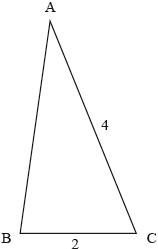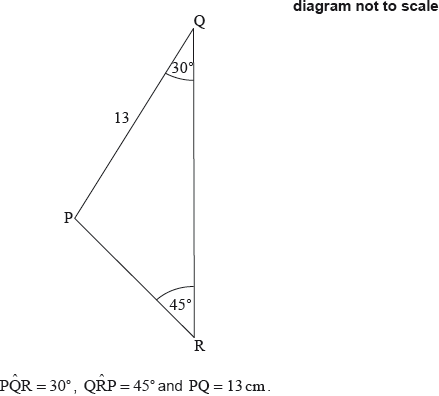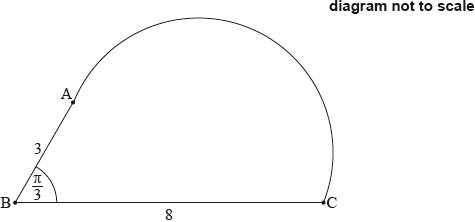| Date | May 2021 | Marks available | 2 | Reference code | 21M.3.AHL.TZ1.2 |
| Level | Additional Higher Level | Paper | Paper 3 | Time zone | Time zone 1 |
| Command term | Show that | Question number | 2 | Adapted from | N/A |
Question
This question asks you to examine various polygons for which the numerical value of the area is the same as the numerical value of the perimeter. For example, a by rectangle has an area of and a perimeter of .
For each polygon in this question, let the numerical value of its area be and let the numerical value of its perimeter be .
An -sided regular polygon can be divided into congruent isosceles triangles. Let be the length of each of the two equal sides of one such isosceles triangle and let be the length of the third side. The included angle between the two equal sides has magnitude .
Part of such an -sided regular polygon is shown in the following diagram.
Consider a -sided regular polygon such that .
The Maclaurin series for is
Consider a right-angled triangle with side lengths and , where , such that .
Find the side length, , where , of a square such that .
Write down, in terms of and , an expression for the area, , of one of these isosceles triangles.
Show that .
Use the results from parts (b) and (c) to show that .
Use the Maclaurin series for to find .
Interpret your answer to part (e)(i) geometrically.
Show that .
By using the result of part (f) or otherwise, determine the three side lengths of the only two right-angled triangles for which .
Determine the area and perimeter of these two right-angled triangles.
Markscheme
and (A1)
(M1)
A1
Note: Award A1M1A0 if both and are stated as final answers.
[3 marks]
A1
Note: Award A1 for a correct alternative form expressed in terms of and only.
For example, using Pythagoras’ theorem, or or .
[1 mark]
METHOD 1
uses (M1)
A1
AG
METHOD 2
uses Pythagoras’ theorem and (M1)
A1
AG
METHOD 3
uses the cosine rule (M1)
A1
AG
METHOD 4
uses the sine rule (M1)
A1
AG
[2 marks]
(M1)
Note: Award M1 for equating correct expressions for and .
A1
uses (seen anywhere in part (d) or in part (b)) (M1)
attempts to either factorise or divide their expression (M1)
(or equivalent) A1
EITHER
substitutes (or equivalent) into (M1)
A1
Note: Other approaches are possible. For example, award A1 for and M1 for substituting into .
OR
substitutes (or equivalent) into (M1)
A1
THEN
AG
[7 marks]
attempts to use the Maclaurin series for with (M1)
(or equivalent) A1
A1
Note: Award a maximum of M1A1A0 if is not stated anywhere.
[3 marks]
(as and )
the polygon becomes a circle of radius R1
Note: Award R1 for alternative responses such as:
the polygon becomes a circle of area OR
the polygon becomes a circle of perimeter OR
the polygon becomes a circle with .
Award R0 for polygon becomes a circle.
[1 mark]
and (A1)(A1)
equates their expressions for and M1
M1
Note: Award M1 for isolating or . This step may be seen later.
M1
Note: Award M1 for attempting to expand their RHS of either or .
EITHER
A1
OR
A1
THEN
A1
AG
Note: Award a maximum of A1A1M1M1M0A0A0 for attempting to verify.
For example, verifying that gains of the marks.
[7 marks]
using an appropriate method (M1)
eg substituting values for or using divisibility properties
and A1A1
Note: Award A1A0 for either one set of three correct side lengths or two sets of two correct side lengths.
[3 marks]
and A1
Note: Do not award A1FT.
[1 mark]




